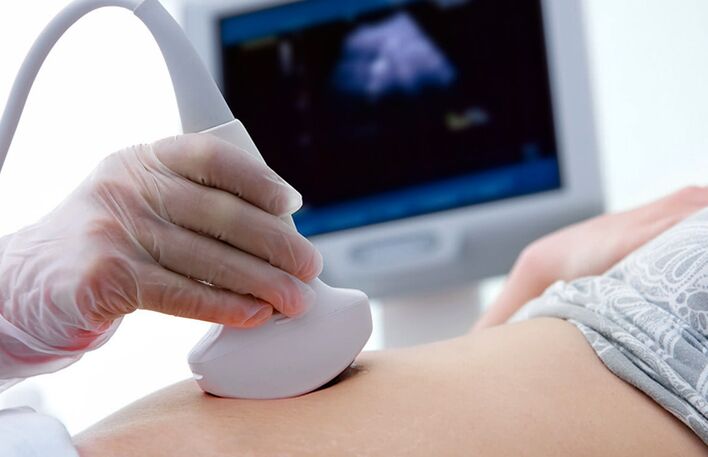Many women suffer when the first symptoms of cystitis appear, they begin to treat themselves, consulting pharmacists at the pharmacy and purchasing sophisticated medicines. They cannot even imagine what the consequences of this treatment could be, without discovering the causes, type and form of the disease. To prevent complications of the disease, it is necessary to carry out adequate diagnostics.
Cystitis is an inflammation of the urinary tract and bladder mucosa. This disease is mainly female. It is caused by the structure of the urethra in women, which is shorter and wider than in men, so infection or penetration of harmful microorganisms occurs more frequently.
Cystitis according to ICD-10
According to the international classification of diseases, this type of inflammation belongs toClass XIV, your code№30, 0.
According to the international classification of diseases, there are several forms of cystitis:
- Acute cystitis code no. 30. 0.
- Chronic (interstitial) code No. 30. 1.
- Chronic cystitis (other) code no. 30. 2.
- Trigonite code no. 30. 3.
- Type of radiation of the inflammatory process code nº 30. 4.
- Other forms of cystitis No. 30. 5.
- Unspecified cystitis no. 30. 6.
Each form of the inflammatory process requires individual treatment. Therefore, the disease must be diagnosed in a medical center and medications recommended by a doctor must be taken.
Causes of cystitis in women
People suffer from this disease30% women under 45. The main reason for the occurrence of the inflammatory process is a special anatomical structure in which there is contact between the flora of the woman's reproductive and urinary systems. Other reasons include:
- Inadequate genital hygiene.
- Passive (sedentary) lifestyle.
- Stress.
- Unbalanced diet.
- Eating spicy and fatty foods.
- The presence of chronic gynecological and venereal diseases.
- Unprotected sex.
- Prolonged hypothermia.
- Bladder injuries.
- Changes in hormonal levels.
- Reduced immunity.
- Synthetic underwear.
The most common cause of bladder inflammation is intestinal infection.
What bacteria cause inflammation?
Cystitis occurs due to infection with several pathogenic bacteria:
- Candida fungi.
- Escherichia coli.
- Pseudomonas aeruginosa.
- Gonococci.
- Ureaplasma.
- Mycoplasmas.
- Trichomonas.
- Chlamydia.
- Enterobacter.
- Treponema pallidum.
- Staphylococci.
- Streptococci.
- Enterococcus.
- Meningococcus.
- Coliform microbes.
- Proteus.
- Salmonella.
- Virus.
- Listeria.
- Klebsiella.
The most common opportunistic bacteria that causes the acute stage of inflammation is Escherichia coli.

The first signs of the disease in women
Within 24 hours, the first signs of the disease appear after infection with pathogenic bacteria or hypothermia. These signs include:
- Weakness.
- Low fever.
- Frequent urination in small amounts.
- Itching in the genitals.
- Severe pain in the lower abdomen at night.
- Pain when urinating.
- The appearance of discharge from the genitals.
The urine becomes cloudy with flaky sediment mixed with blood or pus.

Symptoms of cystitis in women
The main symptoms of the inflammatory process in women:
- Urine is released frequently and in small portions.
- Burning sensation when emptying the bladder.
- At night, frequent urge to urinate.
- Cloudy urine mixed with mucus, blood and pus.
- Feeling of heaviness in the lower part of the abdomen.
- Urine has an unpleasant, pungent odor.
- A dull pain appears in the lower abdomen, kidneys and spine.
- Low body temperature.
If one or more symptoms are detected, a diagnosis must be made to avoid complications or the development of urolithiasis.

Urinary incontinence with cystitis in women
Urinary incontinence in women with the disease is a signillness neglect. The main reason is self-medication or unwillingness to go to a medical center.
Urinary incontinence occurs due to the developmentinflammatory process after bladder infection. The nerve endings in the walls of the bladder become irritated, causing a frequent urge to urinate. If treatment is inadequate or ignored, the urges become strong and can no longer be controlled.
Do your kidneys hurt with cystitis?
The kidneys are part of the urinary system and produce urea, which forms urine. Urine exits through the ureters, collects in the bladder and then exits. If the inflammatory process in the bladder becomes advanced, the infection travels up through the ureters to the kidney, which is why kidney pain occurs in cystitis.
If kidney pain begins to intensify after cystitis, it means that the patient is developing a disease - pyelonephritis. Therefore, if kidney pain occurs, you should immediately consult a doctor for tests and diagnosis of the disease.
Types and forms of cystitis in women
Modern medicine classifies cystitis depending on the nature of the disease, the causes of its occurrence, morphology, stage of development and spread of the inflammatory process. Cystitis can occur in the following forms:
- Spicy– inflammation of the mucous membrane of the bladder due to various infections.
- Chronicle– differs from acute cystitis in fading symptoms with their periodic appearance.
- Interstitial– characterized by the formation of a malignant tumor on the walls of the bladder. This is a dangerous pathology that requires surgical intervention.
- Honeymoon cystitis- this is a special form, typical for girls who begin to have sex. During the defloration process, foreign bacteria penetrate the vaginal cavity, which causes inflammatory processes.
Most experts identify the following types of cystitis:
- InfectiousCystitis occurs due to the entry of harmful bacteria and microorganisms into the bladder.
- Traumatica type of disease that occurs due to injuries and bruises in the urethra.
- ChemicalCystitis occurs when inadequately treated or when the body is exposed to toxic substances.
- Hemorrhagicthe species occurs as a result of viral diseases.
- Hypercalceuricthe type occurs in women who suffer from kidney failure.
- Parasitethe species occurs due to the penetration of parasites (worms) from the anus to the urethra.
- SexualCystitis occurs in women who frequently change sexual partners.
- Raycystitis occurs during procedures with radiation exposure to the body.
- AllergicThis type occurs when allergens enter the body and can cause an inflammatory process.
- CervicalCystitis is an inflammation of the bladder neck.
- Fungalthe species develops if there are Candida fungi in the body.
- HormoneCystitis in women occurs with an increase in the level of estrogen in the body, which reduces immunity and facilitates the penetration of the infection.
Recurrent cystitis
Recurrent cystitis is an acute type of inflammation of the genitourinary organs that occursmore than 3 times in six months. Recurrent type causes:
- Chronic non-compliance with personal hygiene rules.
- Genetic predisposition.
- Anatomical anomalies such as dystopia.
- Narrowing of the urethra.
- Stones or sand in the bladder.
- Frequent change of sexual partners.
- Gynecological diseases.
- Constant hypothermia.
For the recurrent type of the disease, treatment is the same as for acute cystitis.
Diagnosis
The doctor carries out an initial examination of the patient, collects anamnesis and writes a referral for examinations:
- General blood analysis.
- General urine analysis.
- Urine bacteriological culture.
- Vaginal microflora smear.
- Ultrasound.
- Cystography.

Based on the test results, the doctor makes a diagnosis and prescribes appropriate treatment.
How long does it take to treat cystitis in women?
The doctor prescribes a course of treatmentat least 10-14 days. The duration of treatment will depend on the form and type of cystitis, as well as the likelihood of relapse. The inflammatory process is treated with medication in several stages. Self-medication can lead to the development of complications and treatment will take a long time.
Methods and medicines for the treatment of cystitis in women
If cystitis occurs, first of all, it is necessary to consult a doctor and undergo tests to find out the cause of its occurrence.
To treat diseases of the genitourinary organs, antibiotics, herbal remedies, hot baths and folk remedies are prescribed. Treatment methods and dosage of medications are determined by the doctor.
During drug treatment, a complex treatment with antibiotics, antispasmodics, probiotics, herbal medicines is carried out, and in case of severe pain, analgesics are prescribed.
During antibiotic treatment, the intestinal microflora suffers, which is why the doctor prescribes probiotics.

For severe spasms, antispasmodics are prescribed.
Herbal medicines are prescribed by a doctor to alleviate inflammatory processes in the urinary system. These are preparations based on herbs and plant flowers that are effective in combating the inflammatory process. These include:
- Blueberry leaves.
- Little bear.
- Cranberry-based products and medicinal herbs.
Therapeutic baths help relieve spasms and have an antibacterial effect. Herbal decoctions, infusions and oils are added to these baths:
- Chamomile flowers.
- Collection of herbs for the urinary system.
- Calendula.
- A Serie.
- Saint John's herb.
- Eucalyptus oil.
- Lemon oil.
- Sage oil.
- Lavender oil.
For quick and effective treatment, complex therapy is carried out.
Is it possible to cure cystitis without antibiotics?
Antibiotic-free treatment is prescribed only in the case of an acute type of illness; for your treatment,antispasmodic and antimicrobial medications. In most cases, the acute form becomes chronic, in which antibiotic treatment cannot be avoided.
Do they give sick leave for cystitis?
Cystitis is a disease in which the inflammatory process develops rapidly. In the acute type of the disease, the body temperature often rises, which indicates the need for bed rest, which means that it is necessary to issue a sick leave certificate.
In the case of a chronic illness, sick leave is not granted, as the disease does not have pronounced symptoms. It is important to remember that for its treatment it is necessary to undergo tests and carry out diagnostic procedures, which also takes time.
Consequences and complications
This disease, in acute and chronic forms, can be treated quickly and effectively, but if the treatment is carried out independently and incorrectly, the inflammation takes on other forms, complications arise that develop into other diseases. Such consequences and complications include:
- Cystitis transforms into interstitial, hemorrhagic and gangrenous forms.
- Pyelonephritis.
- Bladder empyema.
- Paracystitis.
- Trigonite.
The danger of complications is that new diseases will appear in the body.
Prevention
To prevent the disease, it is important to follow the following rules and recommendations:
- Maintain your drinking regimen.
- Observe personal hygiene rules.
- Maintain a rest and sleep schedule.
- Dress according to the weather.
- Eat healthy and balanced foods.
- Refuse bad habits.
- Drink decoctions of diuretic herbs.
- Exercise.
- Take vitamins.
It is important to take care of your health, consult a doctor, diagnose diseases in a timely manner and take preventive measures.




























